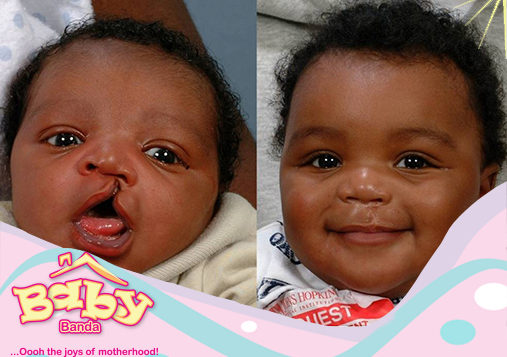Since this condition is present at birth, the doctor will have a plan of treatment depending on the severity of the symptoms. These treatment interventions include:
1. Surgical Repair
• Surgical repair of the lip. The lip repair is usually done between 3 and 6 months after birth. A plastic surgeon will carry out this operation under general anaesthesia. Part of the operation involves stitching the skin of the lip together. The operation may also involve improving the baby’s nose.
• Surgical repair of the palate. This is usually done from about 4 months to 12 months of age. Studies suggest that repairing the palate before the child learns to speak will help in speech development.
• Further surgery may be required to adjust the original repair. A small hole (fistula) might remain in the palate and might need to be closed if it affects speech or allows food or drink to enter the nose.
2. Monitoring the Sense of Hearing
Children born with clefts sometimes suffer hearing loss because of the cleft. This is usually due to fluid in the middle ear but it sometimes corrects itself as the child grows up. Your baby should be assessed for hearing and speech and referred to an audiologist or otologist when necessary.
3. Orthodontics
This involves correcting the position of the teeth. It is common for children born with clefts to have crooked or irregular teeth. The “baby teeth” are not as affected as the permanent teeth. Proper maintenance of the baby teeth is important as they act as a support structure for the permanent teeth that are developing in the jaws and under the baby teeth. Early loss of the baby teeth can create or complicate orthodontic problems.
4. Bone graft
If the cleft has involved the gum (alveolus), a bone graft operation might be suggested at about 9 years of age. The operation involves taking some bone usually from the hip and inserting it into the cleft.
5. Speech and language
Children should be monitored as early as possible even for first sounds, cooing, babbling and words. A good seal between the mouth and the nose is required for correct speech. Movement of the soft palate and the muscles in the throat creates the seal. The soft palate must make contact with the back of the throat. Babies born with a cleft of the palate, with or without a cleft of the lip, may have speech problems. A speech therapist needs to see these children routinely to assess and help improve the speech. If necessary, the speech therapist can develop exercises to help in making the correct sounds.













